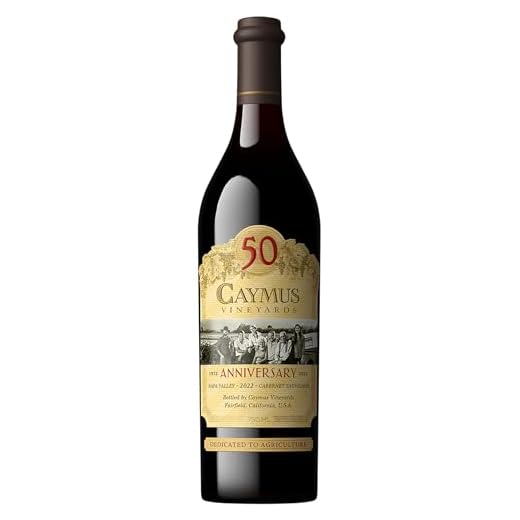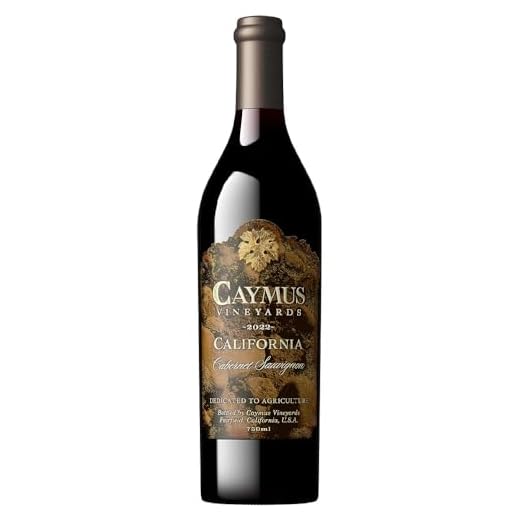



To truly appreciate the complexity of these deep-hued beverages, focus on their structure and flavor profiles. Opt for varietals like Cabernet Sauvignon or Merlot, which offer rich tannins and dark fruit notes. For a lighter choice, Pinot Noir presents an elegant balance of acidity and berry flavors, making it ideal for pairing with a variety of dishes.
When selecting a bottle, consider the region of origin. Wines from regions like Bordeaux or Tuscany are renowned for their craftsmanship and distinct characteristics. Look for specific vintages that showcase the terroir, as certain years produce exceptional quality. Understanding how climate and soil impact flavor can elevate your experience significantly.
Pairing food with these sumptuous drinks enhances both the meal and the beverage. For instance, a robust Syrah complements grilled meats beautifully, while a delicate Chianti pairs well with tomato-based pasta dishes. Experiment with combinations to discover what pleases your palate.
Lastly, serve these drinks at the right temperature to unlock their full potential. Aim for a serving temperature of around 60-65°F (15-18°C) for most varieties. This allows the aromas to develop and the flavors to become more pronounced, ensuring an enjoyable tasting experience.
Understanding an Everyday Red Beverage
This versatile drink is crafted primarily from dark-skinned grapes, exhibiting a broad spectrum of flavors and aromas. For those seeking approachable options, look for bottles with soft tannins and fruity notes, such as Merlot or Grenache. These selections tend to be friendly to a variety of palates and pair well with everyday meals.
Flavor Profiles
Expect to encounter a range of taste sensations, from berry and plum to herbal and earthy undertones. Each varietal contributes unique characteristics; for instance, Cabernet Sauvignon might present bold blackcurrant flavors, while Pinot Noir often leans towards cherry and spice. Experimenting with different types can enhance your appreciation for this delightful drink.
Food Pairing Suggestions
For successful pairings, consider the body and acidity of the drink. Lighter styles complement dishes like grilled chicken or pasta with tomato sauce, while fuller-bodied options harmonize with red meats and hearty stews. The key is to balance flavors, ensuring neither the dish nor the beverage overpowers the other.
Characteristics of Red Table Wine
When selecting a bottle, focus on the balance between acidity, tannins, and fruitiness. Wines from regions like California, Bordeaux, and Tuscany offer a variety of profiles, but high-quality options typically present a harmonious integration of these elements.
Consider the flavor spectrum. Expect notes ranging from dark fruits like blackberry and plum to lighter options such as cherry and raspberry. Spicy undertones, derived from oak aging or varietal characteristics, can enhance complexity. Look for herbal or earthy nuances, especially in blends, which add depth to the tasting experience.
The alcohol content usually hovers between 12% and 15%, affecting body and mouthfeel. A fuller-bodied choice will provide a richer sensation, while lighter styles can be refreshing and versatile.
Temperature plays a significant role in enjoyment. Serve slightly cooler than room temperature, around 60-65°F (15-18°C), to enhance aromas and flavors. This temperature allows the wine to showcase its character without overwhelming the palate.
Food pairing is essential. These selections complement a variety of dishes. Rich, hearty meals like beef stew or grilled meats harmonize beautifully, while lighter fare such as pasta with tomato sauce or roasted vegetables can also work well. Explore the interplay of flavors for an elevated dining experience.
Lastly, don’t shy away from experimenting with lesser-known varietals. Exploring regions beyond the mainstream can unveil remarkable finds at accessible price points, allowing for both discovery and pleasure.
Popular Varieties of Red Table Wine
For those looking to explore flavorful selections, these varieties stand out:
- Cabernet Sauvignon: Known for its bold structure and rich flavor profile, this variety often features notes of blackcurrant, cedar, and spice. It pairs well with red meats and hearty dishes.
- Merlot: Softer and more approachable, Merlot offers plum and cherry characteristics. It’s versatile, making it a great match for pasta, poultry, and even pizza.
- Pinot Noir: This grape thrives in cooler climates and is celebrated for its elegance. Expect flavors of raspberry and earthiness, which complement duck, salmon, and mushroom dishes.
- Syrah/Shiraz: Depending on the region, this grape can present a range of flavors from dark fruits to peppery notes. It’s excellent with grilled meats and barbecue.
- Zinfandel: Often fruit-forward with a hint of spice, this variety is perfect for casual gatherings. It pairs well with barbecue, burgers, and rich sauces.
Choosing a bottle from these options will enhance your dining experience and elevate everyday meals to something special. Consider the meal you’re serving and select a grape that complements the flavors. Happy tasting!
Food Pairings for Red Table Wine
Grilled meats, particularly ribeye and lamb chops, harmonize beautifully with a medium-bodied pour. The fat and char from the grill complement the fruitiness and acidity, creating balance on the palate.
Pasta dishes, especially those featuring tomato-based sauces, find a perfect match in a bold pour. The acidity in the sauce enhances the wine’s structure, while the tannins smooth out the dish’s richness.
For cheese lovers, aged cheddar and gouda are excellent companions. Their creaminess and robust flavors resonate with the complexity of a full-bodied selection, providing depth to each bite.
Roasted vegetables, seasoned with herbs, enhance the earthy notes found in many varieties. Pair these with a glass that showcases subtle spice and fruit undertones for a refreshing experience.
Asian cuisine, particularly dishes with soy sauce or teriyaki, can also be elevated with a fruit-forward option. The sweetness in the dish contrasts beautifully with the wine’s tannins, creating a delightful interplay.
| Food | Wine Pairing |
|---|---|
| Grilled Ribeye | Medium-bodied option |
| Pasta with Tomato Sauce | Bold selection |
| Aged Cheddar | Full-bodied pour |
| Roasted Vegetables | Earthy variety |
| Teriyaki Chicken | Fruit-forward choice |
How to Serve Red Table Wine
Always serve at the right temperature. Aim for around 60-65°F (15-18°C) for optimal flavor release. If it’s too warm, the alcohol can dominate; too cold, and the nuances get muted.
Use proper glassware. A standard red glass with a larger bowl allows for better aeration, enhancing the bouquet and flavor profile. Swirling the liquid in the glass helps to aerate it further, releasing more aromas.
Decanting
Consider decanting to improve flavor. This process allows the wine to mix with air, softening tannins and enhancing its character. For younger varieties, decant for at least 30 minutes; older ones may require less time to avoid over-aeration.
Food Pairing Tips
Pairing is key. Match with hearty dishes like grilled meats, pasta with red sauces, or rich cheeses. The right combination can elevate the dining experience. If you’re preparing to entertain, ensure your kitchen is equipped with the best scrubber for oven cleaning to keep everything pristine, allowing you to focus on the flavors.
Storing Properly
Maintain a consistent temperature between 55°F and 65°F for optimal preservation. Avoid fluctuations to prevent spoilage or flavor loss. A dedicated cellar or wine fridge is ideal, but a dark closet can work in a pinch.
Humidity Control
Keep humidity levels around 60-70% to prevent cork drying out, which can lead to oxidation. If your environment is too dry, consider using a humidifier or placing a small dish of water in your storage area.
Light and Vibration
Store bottles away from direct sunlight and fluorescent lights, as UV rays can degrade quality. Additionally, minimize movement; vibrations can disturb sediments and affect taste. Choose a stable location for your collection.
Understanding the Health Benefits of Red Table Wine
Moderate consumption of this beverage can offer several health advantages, particularly due to its rich antioxidant content. Key compounds such as resveratrol and flavonoids contribute to various positive effects on the body.
- Heart Health: Studies suggest that moderate intake may help lower the risk of heart disease. The antioxidants can improve cholesterol levels by increasing high-density lipoprotein (HDL) and protecting against artery damage.
- Anti-Inflammatory Properties: The compounds found in this drink may reduce inflammation, which is linked to numerous chronic diseases. This can lead to a decreased risk of conditions such as arthritis.
- Blood Sugar Regulation: Resveratrol has shown potential in improving insulin sensitivity, which could assist in managing blood sugar levels and reducing the risk of Type 2 diabetes.
- Longevity: Some research indicates that individuals who consume this beverage in moderation may enjoy a longer lifespan. The antioxidants may protect cells from damage, thus promoting overall health.
To fully benefit from these advantages, moderation is key. The recommended amount is generally one glass per day for women and up to two glasses for men. Excessive consumption can negate these benefits and lead to health complications.
Choosing quality options can enhance both enjoyment and health benefits. Look for varieties with higher antioxidant levels and consider organic options to minimize exposure to pesticides.
Incorporating this drink into a balanced diet, paired with nutritious foods, can maximize its positive effects. Always consult with a healthcare professional if you have specific health concerns or conditions that may be impacted by alcohol consumption.









